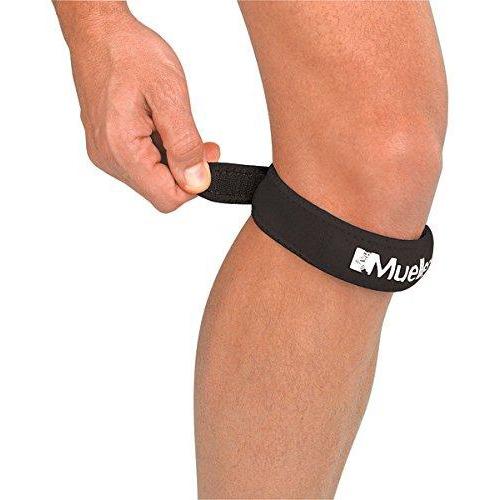If you are a gymnast or runner or basketball player or volleyball player, there is a fair chance you have experienced pain around the kneecap (patella
If you are a gymnast or runner or basketball player or volleyball player, there is a fair chance you have experienced pain around the kneecap (patella).
Jumper’s knee band is the most common with athletes whose sports require frequent jumping or frequent strain on knees like weightlifting and sprinting. Constant jumping, landing, and changing direction while doing field activities create a strain on the patella tendon, which may get worse over time if ignored. However, it can be treated with a jumper’s knee bandage, which supports knee by redistributing force away form tendon.
What is the jumper’s knee?
Patellar Tendonitis or jumper’s knee is a painful condition in which the patellar tendon gets damage. The patellar tendon is a tissue, which connects shinbone (tibia) to the kneecap (patella). During this condition, athletes are likely to experience aching and inflammation just below the kneecap and stiffness post-activity.
Symptoms of jumper’s knee
Common symptoms include
- Stiffness in the knee while squatting, climbing stairs, jumping, sitting or kneeling
- Pain while bending the knee
- Pain in quadriceps muscles
- Weakness in calf or leg
- Direct pain over patellar tendon (below the kneecap)
- Inflammation around the lower knee
Benefits of using the jumper’s knee strap
A jumper’s knee band is recommended by doctors to reduce the strain on the patella tendon,
Let us see how this strap helps:
- Relieves pain due to injuries in the patellar tendon caused by jumping, running, and other strenuous activities where pressure on the knee is involved.
- This strap is small and easy to adjust and fit provides perfect compression.
- Stays in place even after a long session of the training, and running. Allows carrying daily routines with ease
- Fits in both left and right knee, no need to buy separate straps for the different legs.
- Appropriate for treating runner’s knee and as well as jumper’s knee
- Jumper’s strap takes away the strain of patellar tendon, which helps in reducing pain and exertion on muscle.
How to use the jumper’s knee bandage?
Adjustable jumper’s knee straps are the best to ensure the right amount of pressure according to the size of your muscle.
- The circular strap needs to pull off towards the knee through your foot.
- Place the front center of the band directly under the kneecap so that the air pillow or padded cushion rests at the top where the patella attaches to the patella tendon.
- The strap should act as a support to your knee. For proper adjustment, you can check online or your trainer. In case of any tingling, weakness, or numbness, remove the strap.
Prevention from jumper’s knee
However, there are treatments available for injuries but preventing them in the first place is the best option to curb the chance of occurrence. It is always advisable to stretch the hamstrings, calf muscles, and quadriceps before, after, and during the game to ensure working towards strengthening muscles that support the knee to avoid future injury. Let the injury take time to heal rather than rushing to begin again, it is better to go slow after injury.
Conclusion
Jumper’s knee may occur due to excessive pressure on your knees, which ruptures the patella tendon. Although there are knee straps, available with various brands like Mueller, it is advisable to refrain yourself from high impact exercise, or rather indulge in low impact exercises like swimming till the time you fully recover.
Strap absorbs the shock of the foot and acts as a support to your patella while putting on more tension on leg might land you into a more serious injury. Buy your jumper’s knee band from a certified brand and research carefully before making a buying decision.
Stay safe and jump up high!!!


COMMENTS